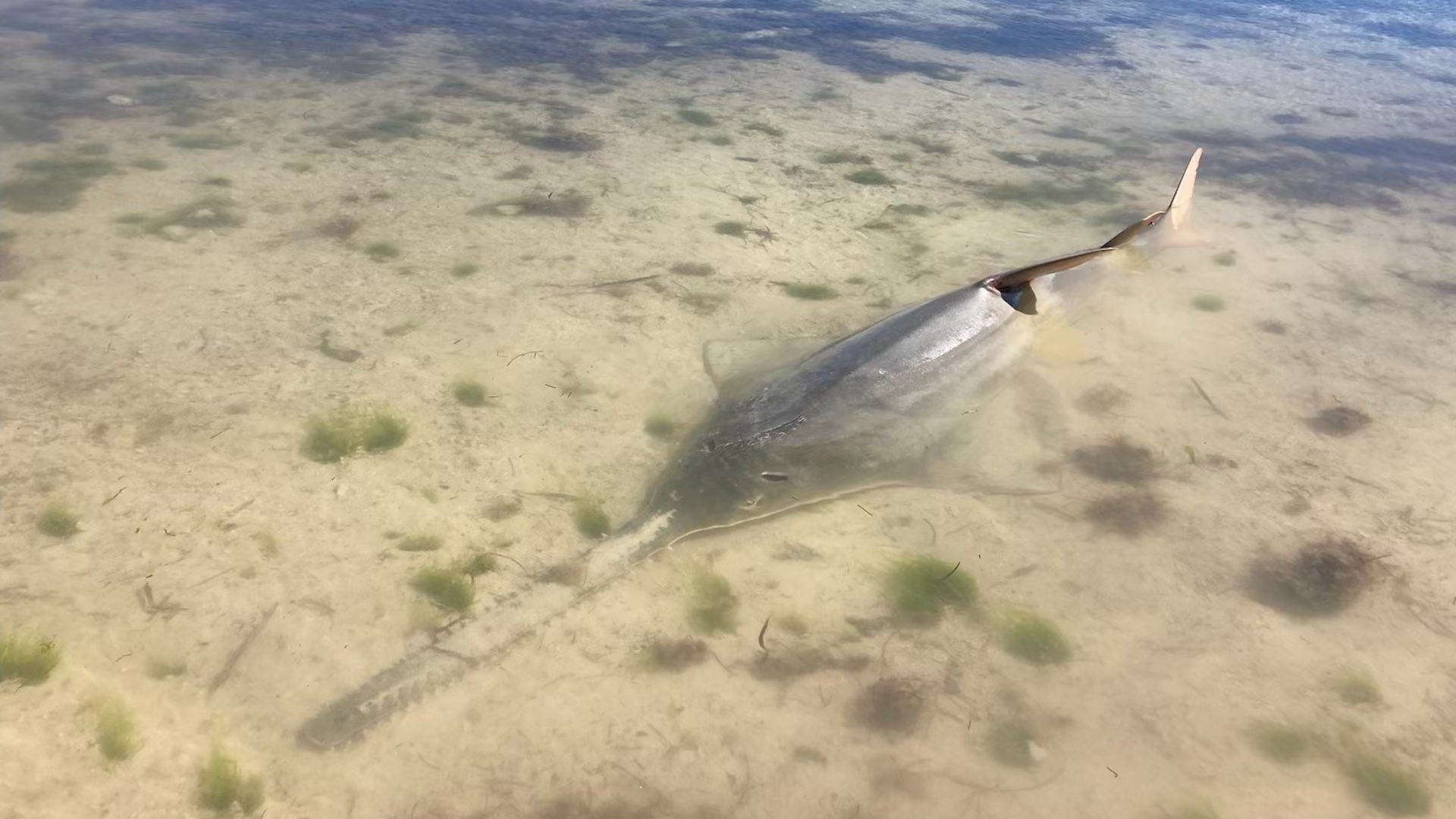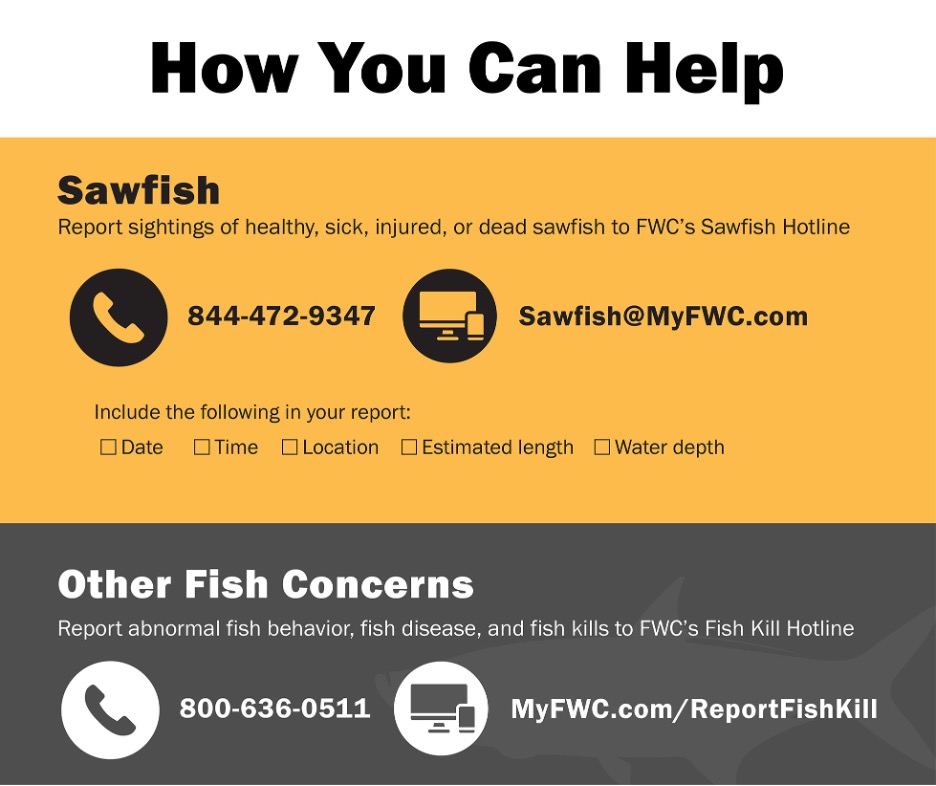
Since January, marine biologists have been investigating a concerning mystery: endangered smalltooth sawfish are dying in dramatic fashion. Scientists have few clues to go on as they try to figure out what is killing them. And with just 650 breeding females remaining in the wild, the race is on to solve the case before it’s too late.
The mystery illness plaguing the sawfish—named for their long, toothed snouts (called rostrums)—is distressing. Over the past few months, more than 175 individuals have been spotted near the ocean’s surface with their rostrums out of the water, swimming in circles and behaving erratically. As of May 8, 47 sawfish have died. Scientists suspect the actual mortality numbers are higher than this.
The sawfish mystery seems to be part of a larger pattern of very abnormal fish behavior in the Florida Keys. Area fish kill hotlines have received more than 460 reports of 57 different species of fish spinning and swirling in the water since November 2023. It is unclear whether these fish illnesses are related to the extremely warm water temperatures of summer 2023 that caused widespread coral bleaching across Florida’s Coral Reef and into the Caribbean.
To date, biologists have taken hundreds of tissue and water samples to test the water’s dissolved oxygen, salinity, and pH, and to look for evidence of toxins or chemicals in the fish. Most analyses have returned normal results, though scientists have identified harmful algal species in some water samples, and their toxins have been detected in fish tissues. It remains to be seen whether these algae are the main cause of the current abnormal fish behavior event.
Scientists are now taking emergency measures to try to protect sawfish. They have performed necropsies on several dead animals and are currently analyzing blood and tissue samples. In early April, NOAA Fisheries also rescued an affected sawfish from the wild, transporting the 11-foot animal from Cudjoe Key to Mote Marine Laboratory in the hopes it would recover under human care. Unfortunately, the animal died on May 2. However, the team caring for the fish learned a great deal about how to care for sawfish, leaving them better equipped for any future rescue and rehabilitation attempts.
Sawfish are remarkable animals and top predators that play an important role in marine ecosystems, so protecting Florida’s sawfish population is important for the health of our ocean. The Florida Fish and Wildlife Conservation Commission requests that anyone who sees a sawfish—healthy or ill—call 844-4-SAWFISH (884-472-9347) or email sawfish@myfwc.com to make a report.
